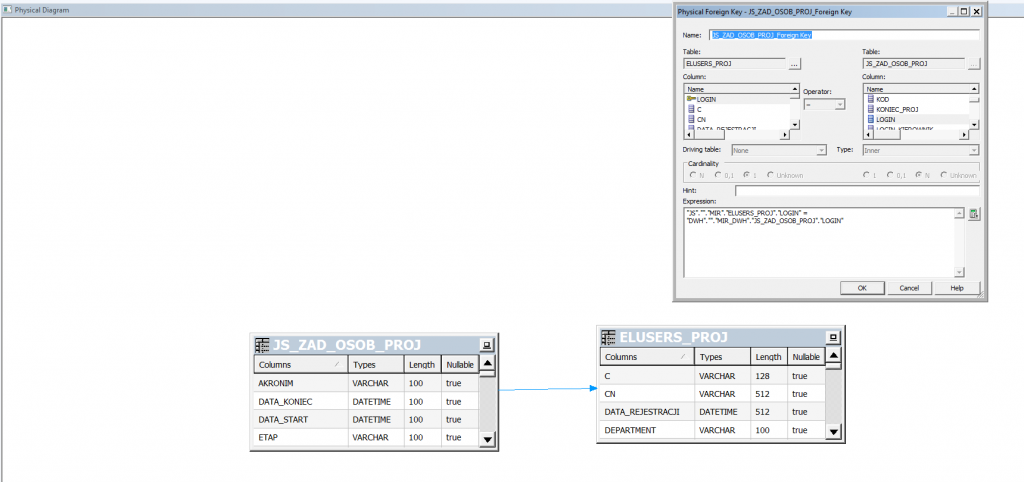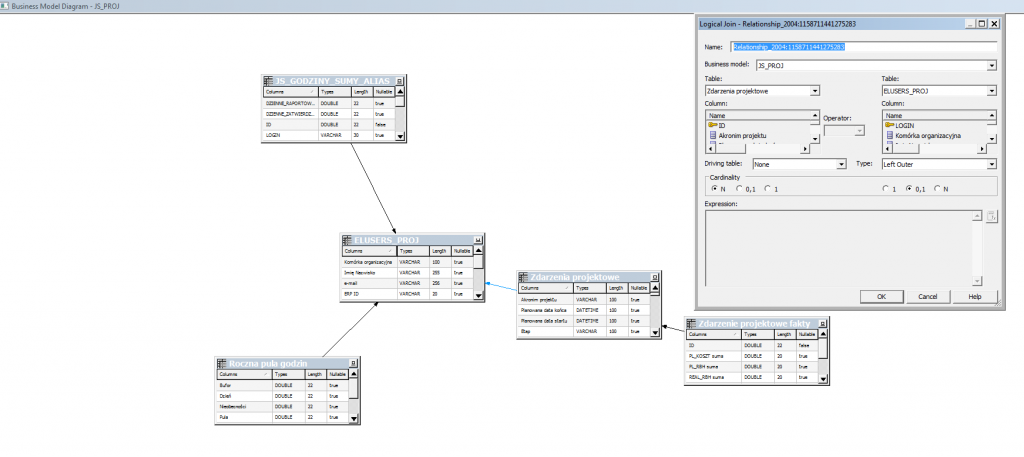Application->Application Properties. Expand the Deployment tree, click Weblogic. There is an “auto generate and synchronize WebLogic JDBC Descriptors during deployment” checkbox.
2 maja 2016
30 kwietnia 2016
weblogic: The task cannot be processed further until the current edit session is activated
That message is not an error. It means that you need to connect to the WebLogic Server Console and activate the changes.
Solution
Access the WebLogic Server Console and click on Activate Changes.
Confirm if your application shows in the WebLogic Server Console under “Deployments”.
Source:
[J2EE:160149]Error while processing library references. Unresolved application library references, defined in weblogic-application.xml: [Extension-Name: adf.oracle.domain, exact-match: false]
weblogic.management.DeploymentException: [J2EE:160149]Error while processing library references. Unresolved application library references, defined in weblogic-application.xml: [Extension-Name: adf.oracle.domain, exact-match: false]
at weblogic.application.internal.flow.CheckLibraryReferenceFlow.prepare(CheckLibraryReferenceFlow.java:24)
at weblogic.application.internal.BaseDeployment$1.next(BaseDeployment.java:706)
at weblogic.application.utils.StateMachineDriver.nextState(StateMachineDriver.java:42)
at weblogic.application.internal.BaseDeployment.prepare(BaseDeployment.java:237)
at weblogic.application.internal.EarDeployment.prepare(EarDeployment.java:61)
Truncated. see log file for complete stacktrace
he ADF libraries in my domain were only targeted at the Admin Server, so when I tried to deploy my application to a Cluster of Managed Servers, it couldn’t see the ADF extensions.
So to get around this, log into the WebLogic console for your domain and do the following:
- Click on Deployments.
- Click on the ‘adf.oracle.domain(1.0,11.1.1.2.0)’ library deployment.
- Click on the Targets tab.
- Select the Managed Server(s) or Cluster(s) to which your application is going to be deployed, leaving the AdminServer target still ticked.
- Click on Save.
Then repeat the steps above for the following libraries:
- adf.oracle.businesseditor(1.0,11.1.1.2.0)
- adf.oracle.domain.webapp(1.0,11.1.1.2.0)
- jstl(1.2,1.2.0.1)
- jsf(1.2,1.2.9.0)
Activate any changes (if running in Production Mode) and try deploying your application again 
19 kwietnia 2016
Rollback
What will happen to rollback session if database shutdown immediate/abort?
Na to pytanie udzielono już odpowiedzi.
bk75 2009-11-28 15:58
However, if it is a single large transaction such as a DELETE against a table with an Index, then it is better to disable FAST_START_PARALLEL_ROLLBACK before restarting the Instance immediately after a SHUTDOWN ABORT. The Parallel Rollback of a single large transaction with an Index can be slower !
FAST_START_PARALLEL_ROLLBACK is an instance parameter which default to LOW (ie a setting of 2 x CPU_COUNT) and can be set to HIGH or FALSE.
Note : If you SHUTDOWN ABORT and STARTUP the database, Oracle only has to do a Rollforward from Redo Logs (for database blocks that haven’t been updated) before it does an OPEN. This is generally a very fast operation. The Rollback of uncomitted transactions is a deferred operation — this means that the Rollback is initiated by SMON or the Parallel Slaves after the Database is OPEN. If a block containing a row that was updated and not committed is referenced by a database session after the OPEN but before it has been rolled back, Oracle does an expedited rollback for that row of the block and then continues doing the rollback of other rows in the background.
Thus, if the transaction had been on Table “A” and the database is SHUTDOWN ABORT and STARTUP, then users can continue accessing and updating all other tables other than Table “A” while the transaction is being rolled back, in the background, after the OPEN.
Hemant K Chitale
12 kwietnia 2016
ubuntu shutdown at specific time
To shutdown run the command
sudo shutdown -P 60
That is 60 mins.
You could do
sudo shutdown -P 1:00
to shutdown at 1am and
6 kwietnia 2016
linux temperature
apt-get install lm-sensors
# sensors-detect
sudo service kmod start# modprobe coretemp
# modprobe i2c-i801
$ sensors
sudo apt-get install hddtemp
sudo hddtemp /dev/sda
31 marca 2016
22 marca 2016
grub crypt
– ENCRYPTED filesystem
https://help.ubuntu.com/community/EncryptedFilesystemHowto3
– partition encryption
http://askubuntu.com/questions/729673/ubuntu-full-disk-encryption-with-encrypted-boot
sudo cryptsetup luksOpen /dev/sda1 dowolna_nazwasudo mkdir /media/my_device sudo mount /dev/mapper/dowolna_nazwa /media/my_devicesudo umount /media/my_device sudo cryptsetup luksClose dowolna_nazwaTo automatically put it in the
/medialocation, use the udisks tool
sudo udisks --mount /dev/mapper/my_encrypted_volume
----------------------------------------------------------
sudo mount /dev/sdXY /mnt
sudo mount –bind /dev /mnt/dev &&
sudo mount –bind /dev/pts /mnt/dev/pts &&
sudo mount –bind /proc /mnt/proc &&
sudo mount –bind /sys /mnt/sys
sudo chroot /mnt
grub-install /dev/sdX
grub-install --recheck /dev/sdX
update-grub
—————————————————————————————–
/etc/default/grub
/etc/grub.d
40_custom
menuentry “Windows 10″ {
set root=’(hd0,2)’
chainloader /EFI/Microsoft/Boot/bootmgfw.efi
}
update-grub
or
grub-mkconfig -o /boot/grub/grub.cfg
powstaje /boot/grub/grub.cfg
Windows 10 dual boot
This is what I did:
- I booted into my Ubuntu installation using the trick of the F9 key in the start up to be able to choose the boot loader.
- Once in Ubuntu, I opened a terminal.
- Using the command below, I checked where Windows boot loader was located:
$ sudo efibootmgr -v - In my case, the original boot loader was in here: /boot/efi/EFI/Microsoft/Boot/bootmgfw.efi . Please note that in your computer it might be in a different place. If so, you will need to adjust the commands below.
- As per Rod’s recommendation in his answer (the one about how to repair the boot loader manually), I made a backup of that file by moving it one level down:
$ sudo cp /boot/efi/EFI/Microsoft/Boot/bootmgfw.efi /boot/efi/EFI/Microsoft/bootmgfw.efi - Finally, I copied GRUB2′s boot loader in that place, “tricking” the system into loading the boot loader I wanted instead of Windows’ original boot loader.
$ sudo cp /boot/efi/EFI/ubuntu/grubx64.efi /boot/efi/EFI/Microsoft/Boot/bootmgfw.efi
So finally I had my dual boot working with GRUB2. In case Windows overwrites the boot loader again after an update (as it did with me), I already know the steps to get grub back to its place.
chainloader /EFI/Microsoft/bootmgfw.efi – Vince Jan 8 ’15 at 0:2311 marca 2016
8 marca 2016
Linux – check architecture
uname –a (x86_64 – 64 BIT) (i686 – 32 BIT)
uname -m
arch
file /sbin/init
3 marca 2016
linux change hostname
hostname
hostname NEW_NAME
/etc/hostname
/etc/sysconfig/network
sysctl kernel.hostname
sysctl kernel.hostname=NEW_NAME
source:
http://www.ducea.com/2006/08/07/how-to-change-the-hostname-of-a-linux-system/
5 lutego 2016
OBIEE BUNDLE PATCH 11.1.1.7.1
OBIEE repository downgrade
http://obieenow.blogspot.com/2014/06/nqserror-36010-server-version-325-can.html
cd C:\Program Files\Oracle Business Intelligence Enterprise Edition Plus Client Tools\oraclebi\orahome\bifoundation\server\bin
nqgenoldverrpd.exe -P Admin123 -I D:\Sample\HandsOn.rpd -O D:\Sample\HandsOn_325.rpd -V 325
11 grudnia 2015
oracle em agent unreachable
– To implement the solution, please execute the following steps::
1. Stop the agent
2. Remove all the files from AGENT_HOME/sysman/log/ directory.
3. Backup and edit AGENT_HOME/sysman/config/emd.properties.
4. Add this line:
NMUPM_TIMEOUT=120
5. Uncomment: ThreadPoolModel = LARGE
6. start the agent
7. Monitor the performance of the server
10 grudnia 2015
9 grudnia 2015
srvctl
https://oracleexamples.wordpress.com/2010/01/22/most-used-srvctl-commands/
What is srvctl? it is the Server Control Utility, we use SRVCTL to start and stop the database and instances, manage configuration information, and to add, move or remove instances and services.
These are some of the srvctl commands I frequently use, this is not a complete reference guide.
I organized the commands as follow:
- To start a rac database
- To stop a rac database
- To check status and configurations
- To start and stop instances
- To start, stop and manage services
Start a rac database (order: nodeapps – asm – database)
srvctl start nodeapps -n nodename
srvctl start asm -n nodename
srvctl start database -d dbname
options are: srvctl start database -d dbname -o open | -o mount | -o nomount
Stop a rac database (order: database – asm – nodeapps)
srvctl stop database -d dbname -o immediate
options are: srvctl stop database -d dbname -o normal | -o transactional | -o immediate | -o abort
srvctl stop asm -n nodename
options are: srvctl stop asm -n nodename -o immediate
srvctl stop nodeapps -n nodename
To check status and configurations
Nodeapps:
srvctl status nodeapps -n nodename
srvctl config nodeapps -n nodename
ASM:
srvctl status asm -n nodename
srvctl config asm -n nodename
Database:
srvctl status database -d dbname
srvctl config database -d dbname (shows instances name, node and oracle home)
Instance:
srvctl status instance -d dbname -i instancename
Services:
srvctl status service -d dbname
To start and stop instances
srvctl start instance -d dbname -i instancename
srvctl stop instance -d dbname -i instancename
To start, stop and manage services
srvctl status service -d dbname
srvctl config service -d dbname
srvctl start service -d dbname -s servicename
srvctl stop service -d dbname -s servicename
srvctl relocate service -d dbname -s servicename -i instancename -t newinstancename [-f]
Solution: Oracle VM Server Reboots
21 listopada 2015
BI formuły
CASE “PR_PROJEKT_HIST”.”RODZAJ” WHEN 2 THEN ‘Grant’ WHEN 3 THEN ‘Przetarg/Zlecenie’ WHEN 4 THEN ‘MIR – własne’ WHEN 5 THEN ‘Zakład – własne’ WHEN 1 THEN ‘Statutowy/Konkurs’ ELSE CAST(“PR_PROJEKT_HIST”.”RODZAJ” AS CHAR(5)) END
REPLACE(CAST(“MULTISPORT_DATA”.”RODZAJ_KARTY” AS char(3)), ’3′, ‘MultiActive5′)
dd.MM.yyyy









